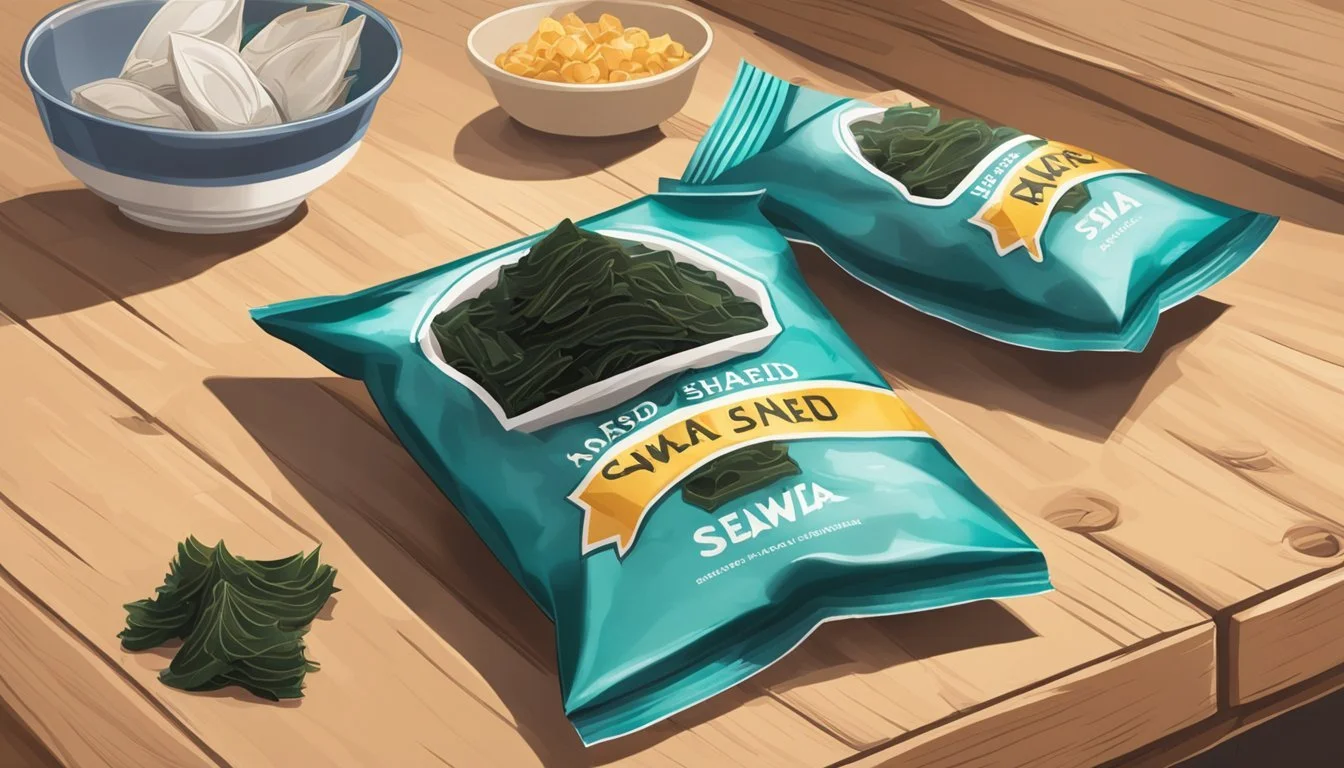How Long Do Roasted Seaweed Snacks Last?
Shelf Life and Storage Tips
Roasted seaweed snacks, commonly known as nori, have become a popular treat due to their nutritional benefits and unique taste. These snacks are made from dried sheets of seaweed that are roasted to enhance their flavor. The shelf life of roasted seaweed snacks is an important aspect for consumers to consider, ensuring they can enjoy the product at its best quality.
The longevity of roasted seaweed snacks can vary depending on several factors, including how they are prepared and how they are stored after opening. Typically, these snacks can last for a considerable amount of time when kept in a dry, cool environment. Sealed packages of roasted seaweed can maintain their quality and freshness until the printed best by date, which is often a conservative estimate of when the product starts to decline in quality rather than a precise expiration date.
Once opened, it's essential to store roasted seaweed snacks properly to prolong their shelf life. Exposure to air, moisture, or heat can compromise the texture and flavor of the seaweed. Therefore, it is recommended to keep them in an airtight container or resealable bag with the air pressed out. This can help maintain their crispness and prevent them from becoming chewy or stale. With proper storage, an opened pack of roasted seaweed snacks can remain enjoyable for several days, although the precise time may depend on the specific conditions of storage.
Seaweed Snack Overview
Seaweed snacks have become a popular treat globally, appreciated for their unique taste and texture. Originating from the culinary traditions of Japan and Korea, these snacks are often made from varieties of seaweed such as nori or gim, and are valued for their health benefits and flavor.
Types of Seaweed Used
Nori and Gim stand out as the primary types of seaweed used to create seaweed snacks. Nori, often associated with Japanese cuisine, is derived from red algae species including Porphyra and is recognizable from its use in sushi. (What wine goes well with sushi?) Gim refers to the roasted seaweed in Korean cuisine and comes from similar algae species. Another type, sea lettuce, is less common but also utilized in some seaweed products. The versatility of these seaweeds allows them to be incorporated into different culinary practices, adapting to the tastes of both Japanese and Korean gastronomy.
Process of Roasting Seaweed
The process to roast seaweed for snacks begins with drying the seaweed, typically under the sun or in special drying facilities. Once dried, the seaweed sheets are lightly brushed with oil and seasoned with salt or other flavorings. The roasting phase follows, where the oil-coated seaweed is placed in a pan or oven and heated until it becomes crispy, transforming into roasted seaweed. This method intensifies the seaweed's flavor and contributes to the sought-after crisp texture of roasted seaweed snacks. The final product, often called gim-gui in Korean, is savored in both Korea and Japan and is increasingly enjoyed as a global snack due to its delicious taste and health-promoting nutrients.
Nutritional Profile
Roasted seaweed snacks are not only flavorful but also pack a dense nutritional punch. These snacks are a good source of several vitamins and minerals essential for the body.
Minerals and Vitamins in Seaweed Snacks
Roasted seaweed snacks contain a variety of minerals, including a significant amount of iodine, which is important for thyroid function. They are a good source of iron for blood health and calcium for bone strength. Additionally, seaweed snacks can be rich in magnesium, an essential mineral for over 300 biochemical reactions in the human body.
Iodine: Essential for thyroid health
Iron: Vital for oxygen transport in the blood
Calcium: Crucial for bone health
Magnesium: Supports metabolic processes
Besides minerals, these snacks are also notable for their content of vitamins. Particularly, seaweed contains vitamins from the B complex, which aid in energy production, and vitamin C, known for its immune-boosting properties. However, the concentration of vitamin C can decrease significantly during the roasting process.
Health Benefits of Seaweed
Fiber and protein are two other key nutrients found in roasted seaweed snacks. The high fiber content aids in digestion and can contribute to satiety, making these snacks an ally for those managing their weight. Moreover, seaweed provides a modest amount of protein, which is essential for tissue repair and muscle growth.
The nutrients in seaweed snacks are responsible for various health benefits:
Fiber: Enhances digestive health and aids in weight management
Protein: Supports muscle repair and overall body maintenance
Consuming roasted seaweed snacks can thus complement a balanced diet, offering an array of essential nutrients while also providing health advantages tied to their rich nutritional content.
Shelf Life Determinants
The longevity of roasted seaweed snacks is influenced by various factors including storage conditions and packaging. Understanding these can help ensure optimal freshness.
Factors Affecting Freshness
Moisture: Seaweed snacks must be kept in an airtight container to protect them from moisture, which can lead to a loss of crispness.
Storage Temperature: Lower temperatures are favorable for extending shelf life.
Packaging: Properly sealed packaging guards against environmental factors.
Signs of Quality Deterioration
Flavor: A change in taste may indicate the product is past its prime, possibly taking on a rancid quality.
Texture: Seaweed should remain crisp; any deviation might suggest staleness.
Color: Discoloration can be a sign of aging.
Mold: The presence of mold signifies spoilage and that the seaweed is no longer safe to consume.
Storage and Preservation
Roasted seaweed snacks require careful storage to maintain their freshness and extend their shelf life. The two main factors to consider are keeping them dry and sealing them to prevent exposure to air.
Proper Storage Methods
Airtight Containers: It's imperative that roasted seaweed snacks are stored in airtight containers. Exposure to air can quickly lead to a loss of crispness and flavor. Containers with tight-fitting lids or sealable plastic bags are excellent choices.
Moisture Control: Including a silica gel packet in the storage container can help absorb any excess moisture which could compromise the quality of the roasted seaweed.
Extending Shelf Life Tips
Freezer Storage: While pantry storage is suitable for short-term, one can place roasted seaweed snacks in the freezer to extend their shelf life for several months. Freezer storage can be especially practical for larger quantities or for retaining crispness over time.
Regular Checks: One should routinely check roasted seaweed snacks for any signs of spoilage or loss of quality, even though they do not typically expire in the traditional sense. If the snacks lose their crispness or show any moisture condensation, they should be consumed shortly thereafter.
Usage Ideas
Roasted seaweed snacks, with their crispy texture and savory flavor, offer versatile options for enhancing everyday dishes.
Incorporating Seaweed Snacks into Dishes
Seaweed snacks can serve as a nutritious and flavorful addition to a variety of meals. They're particularly effective as a crunchy topping on sushi rolls and salads, where their unique umami taste complements fresh ingredients. Rice balls (onigiri) often feature a strip of toasted seaweed for taste and grip. One can also crumble roasted seaweed sheets over bibimbap or miso soup to add depth to these traditional dishes. Alongside ramen, a few pieces of seaweed provide an authentic touch to the meal.
Creative Recipes with Seaweed
Kimbap: Consider kimbap, a Korean type of sushi roll, where roasted seaweed wraps around rice and various fillings, including vegetables and meats.
Pasta: Infuse an oceanic twist into pasta dishes by mixing in pieces of roasted seaweed; its saltiness pairs well with olive oil or butter-based sauces.
Wraps: For a low-carb alternative, use large seaweed sheets as wraps for sandwich fillings—they offer a nutrient-dense and low-calorie option.
Snack Pairings: As an accompaniment to beer or other beverages, roasted seaweed serves as an excellent standalone snack. Its crispness and ease of eating make it an ideal choice for social gatherings or a quick bite.






